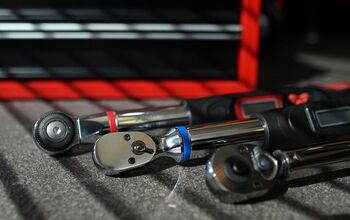IIHS Semi-Autonomous Testing Unveiled: 13 of 14 Automakers Fail

New testing does note bode well for brands... well, except maybe Lexus.
The Insurance Institute for Highway Safety (IIHS) this week unveiled a new ratings system targeting the various semi-automated driving systems found in modern cars, SUVs, and trucks. In the organization's own words, the program "evaluate(s) driver monitoring, attention reminders, emergency procedures and other aspects of system design."
There's just one small problem: of the fourteen systems first tested, all but one scored a "Marginal" or "Poor."
It's important to note that, according to the IIHS, these ratings are model-dependent. The 14 systems tested came from nine manufacturers: Lexus, General Motors, Nissan, BMW, Ford, Genesis, Mercedes-Benz, Tesla, and Volvo. Like the IIHS' other safety ratings, there are four possible grades—Good, Acceptable, Marginal, and Poor—spread across seven categories:
- Driver monitoring
- Attention reminders
- Emergency procedures
- Lane change
- ACC resume
- Cooperative steering
- Safety features
Systems then get stamped a single overall score. It's serious stuff, as the 30-page protocol document covers.
The only system to earn the Acceptable rating is the Lexus Teammate with Advanced Drive setup, which is available in the current Lexus LS full-size luxury sedan. It scored a single Marginal across the categories; the two systems to manage that overall rating (the GMC Sierra's Super Cruise and the Nissan Ariya's ProPilot Assist with Navi-Link) fared slightly worse.
It was a rougher story for the remaining 11 systems, including two from Tesla, which scored 5 "Poor" ratings in the individual categories. In fact, it was Tesla's misleadingly named "Full Self Driving" that couldn't score better than "Acceptable" on any one category.
The testing procedure involved many actions to ensure the continued safety of driver and passengers, including but not limited to whether the driver monitoring camera is blocked (and how that impacts other systems' engagement), if semi-automated systems can be activated if the driver is unbuckled, and whether systems come on or off without clear warnings.
"Some drivers may feel that partial automation makes long drives easier, but there is little evidence it makes driving safer," said IIHS president David Harkey, adding "as many high-profile crashes have illustrated, it can introduce new risks when systems lack the appropriate safeguards."
It's not all doom and gloom, as Harkey also added a positive note. "There's a silver lining if you look at the performance of the group as a whole," explained Harkey, noting that "no single system did well across the board, but in each category, at least one system performed well." With the iterative nature of modern car systems, it gives us hope that these systems can better deliver on their promises.
Become an AutoGuide insider. Get the latest from the automotive world first by subscribing to our newsletter here.

Kyle began his automotive obsession before he even started school, courtesy of a remote control Porsche and various LEGO sets. He later studied advertising and graphic design at Humber College, which led him to writing about cars (both real and digital). He is now a proud member of the Automobile Journalists Association of Canada (AJAC), where he was the Journalist of the Year runner-up for 2021.
More by Kyle Patrick































Comments
Join the conversation
Sorry, no thanks. I, for one, am satisfied by the electronics in my 2003 Mercedes CLK 320. It's extremely rlaxing to drive with no beeping nannies, no cell phone connectivity, and buttons, dials and switches for all the necessary controls. If manufacturers dumped most new vehicle electronic interfaces, their products might be less expensive and more reliable. This whole autonomous driving thing is analogous to Boeing's MCAS system and just as fatal in untrained hands.